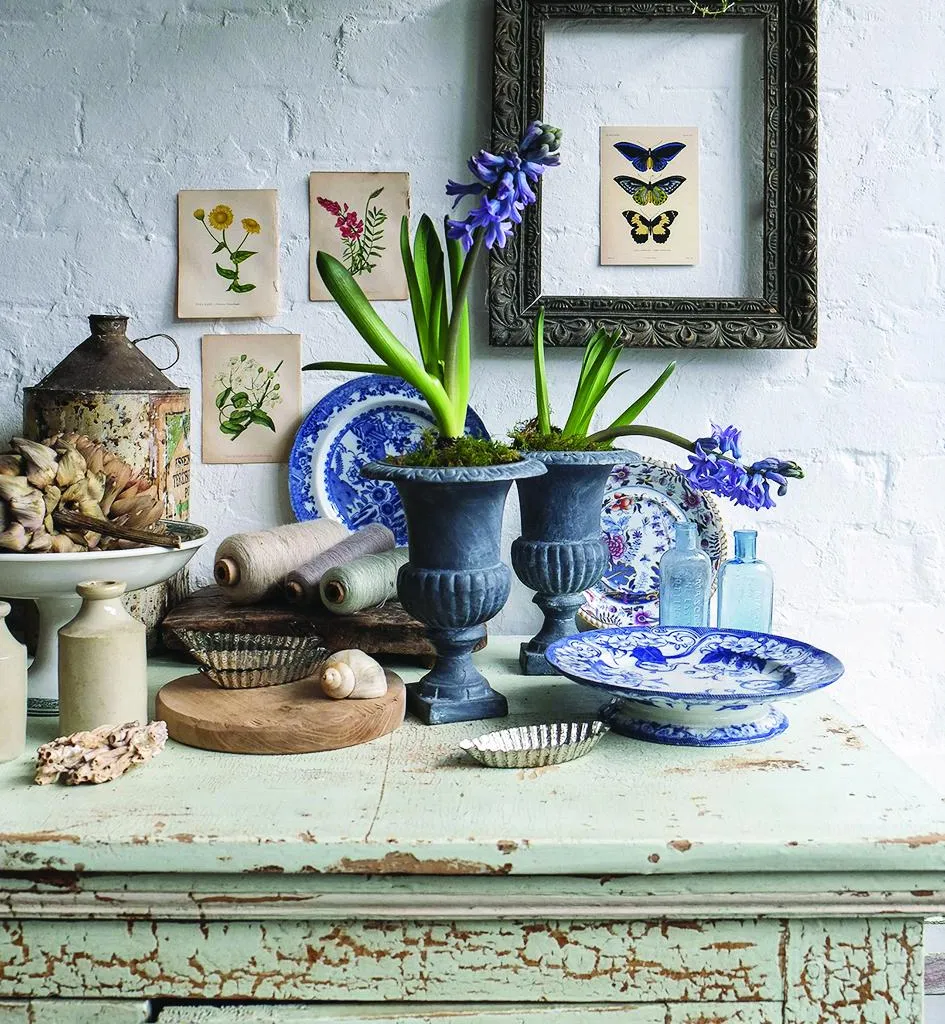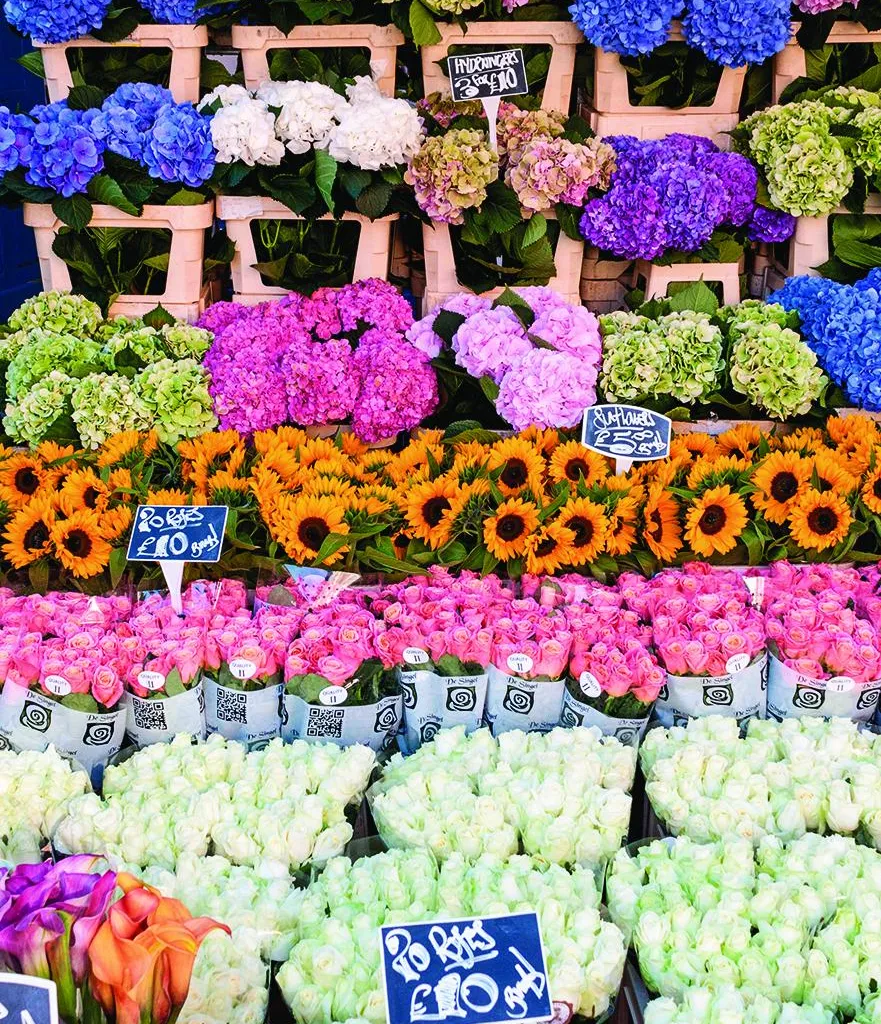Bethnal Green in London’s East End may not be the obvious choice for an antiquing mini break. It was one of the worst slums of Victorian England, bombed heavily during the Second World War and, in the 1960s, it was home to infamous gangsters, the Kray twins, which earned the area an even grimier reputation.
Unlike neighbouring parts of London like Shoreditch and Hoxton, Bethnal Green has been slow to gentrify. But what it lacks in achingly cool bars and restaurants, it makes up for with its cultural diversity and interesting urban history. Waves of immigrants have made Bethnal Green their home, from Huguenot weavers in the 17th century (some believe their love of cut flowers led to the evolution of the famous Columbia Road Flower Market) to the South Asian communities of today.
These days, Columbia Road is the obvious draw: a Victorian street lined with Grade II-listed terraced houses now occupied by over 20 independent shops, specialising in everything from artisan perfumes to old vinyl. Usually, on weekdays, many of these shops are only by appointment, but, at weekends, and particularly on Sundays when the flower market bursts into life, the area is filled with people, activity and colour.
Where to shop in Bethnal Green
Glitterati
Julie has been trading on Columbia Road for 21 years, and her unstuffy approach attracts customers of all ages. Glitterati is three shops in one, specialising in vintage costume jewellery, second-hand books and glassware. The displays of the latter are particularly sparkling – ranging from Georgian decanters to Art Deco crystal glasses and playful vintage cocktail jugs, all at accessible prices.

H M Jones
Nick, a former antiques manager at Liberty, has a keen eye for beautiful Arts and Crafts furniture. His well-appointed shop H M Jones is reminiscent of an Edwardian front parlour, with copper planters, carpet chairs and framed sepia photographs of serious-looking sports teams. Eerie papier-mâché dolls’ heads under glass domes give the shop a contemporary twist.
Vintage Heaven
At Vintage Heaven you’ll find sideboards and shelves filled with the most stylish vintage china, glass and kitchenalia – all charmingly arranged by colour. Owner Margaret Willis’s collection is enviable, with pieces by Woods Ware, Poole Pottery, Portmeirion, Denby, Wedgwood and just about every other manufacturer from the last 100 years. At the back of the shop you’ll find the Cake Hole tearoom, where afternoon tea is served on vintage china, naturally.

Mason & Painter
The exposed brick walls, concrete floor and original fireplaces – dating from the building’s roots as an upholstery workshop in the 1880s – are a fitting foil for the vintage finds in Mason & Painter. It is known for its planters, but its decorative items (we love the prints inspired by the natural world), pretty ceramics and French furniture are equally dreamy.

Two Columbia Road
Two Columbia Road, a light-filled, dual-aspect shop and gallery, focuses on premium mid-century furniture by celebrated European makers including Hans Wegner, Charles Eames and Arne Vodder. Unsigned pieces like the 1960s Danish walnut desk currently on sale at £550 are better value, and much higher quality, than many modern high street equivalents. The modernist art is sublime, too (a recent sale includes an LS Lowry lithograph).

Pure White Lines
Specialising in the outrageous and unexpected, Pure White Lines feels like somewhere rock stars would come to shop. Release your inner wild child with one-of-a-kind decorative objects, like a pair of reconditioned traffic lights, 1970s Playboy pinball machine or a taxidermy polar bear. The quirky vintage chairs, huge mirrors and eye-catching lighting are still bold and stylish, but easier to blend with more low-key interiors.

Where to eat in Bethnal Green
E Pellicci
E Pellicci, an Italian-run traditional East End cafe, has been serving the people of Bethnal Green for more than a century. It retains its 1940s shop front and ornate panelled interior, which are now Grade II-listed. Alongside big British fry-ups, the family serve generous portions of Italian favourites, like lasagne, penne and cannelloni, best washed down with a steaming mug of tea.
Sager + Wilde
Housed in a Victorian railway arch, the interior of Sager + Wilde restaurant and wine bar is simple but sophisticated, with long wooden tables, bentwood chairs, a dramatically curved ceiling and dark panelled walls. When the sun comes out, crowds flock to the pretty terrace, softly lit in the evenings with festoon lights. If you’re visiting the market, come for a boozy brunch (a Venetian Spritz followed by pappardelle with wild boar ragu sounds good to us).

Where to stay in Bethnal Green
Town Hall Hotel
When Bethnal Green town hall opened in 1910, the local council spent lavishly on its design, later adding Art Deco interiors that incorporated mahogany in the mayoral office and a grand marble staircase. Its transformation into a boutique hotel has won numerous plaudits. All the rooms retain original architectural features and are elegantly decorated.

Where to visit in Bethnal Green
Museum of the Home
A few minutes up the road in Hoxton, Museum of the Home reopens this spring after an £18m revamp. The basement level of the 1714 almshouse has been dug out to create new galleries, doubling the permanent display space. The much-loved Rooms Through Time have been refreshed and extended. Meanwhile, themed displays use the museum’s collection of everyday domestic items to explore what ‘home’ really means.

Columbia Road Flower Market
The market originally began trading on Sundays so that the local Jewish community could keep the Sabbath. It’s unclear how it evolved into a flower market, but it’s possibly because traders wanted to clear leftover stock from Covent Garden. At the adjoining vintage market, pick up good-quality second-hand knits, vinyl and china.

Don’t miss
In 1943, the worst civilian disaster of the war took place at Bethnal Green tube station, when 173 people died in a crush on the staircase. Today, an award-winning memorial outside the tube station movingly commemorates the tragedy.


